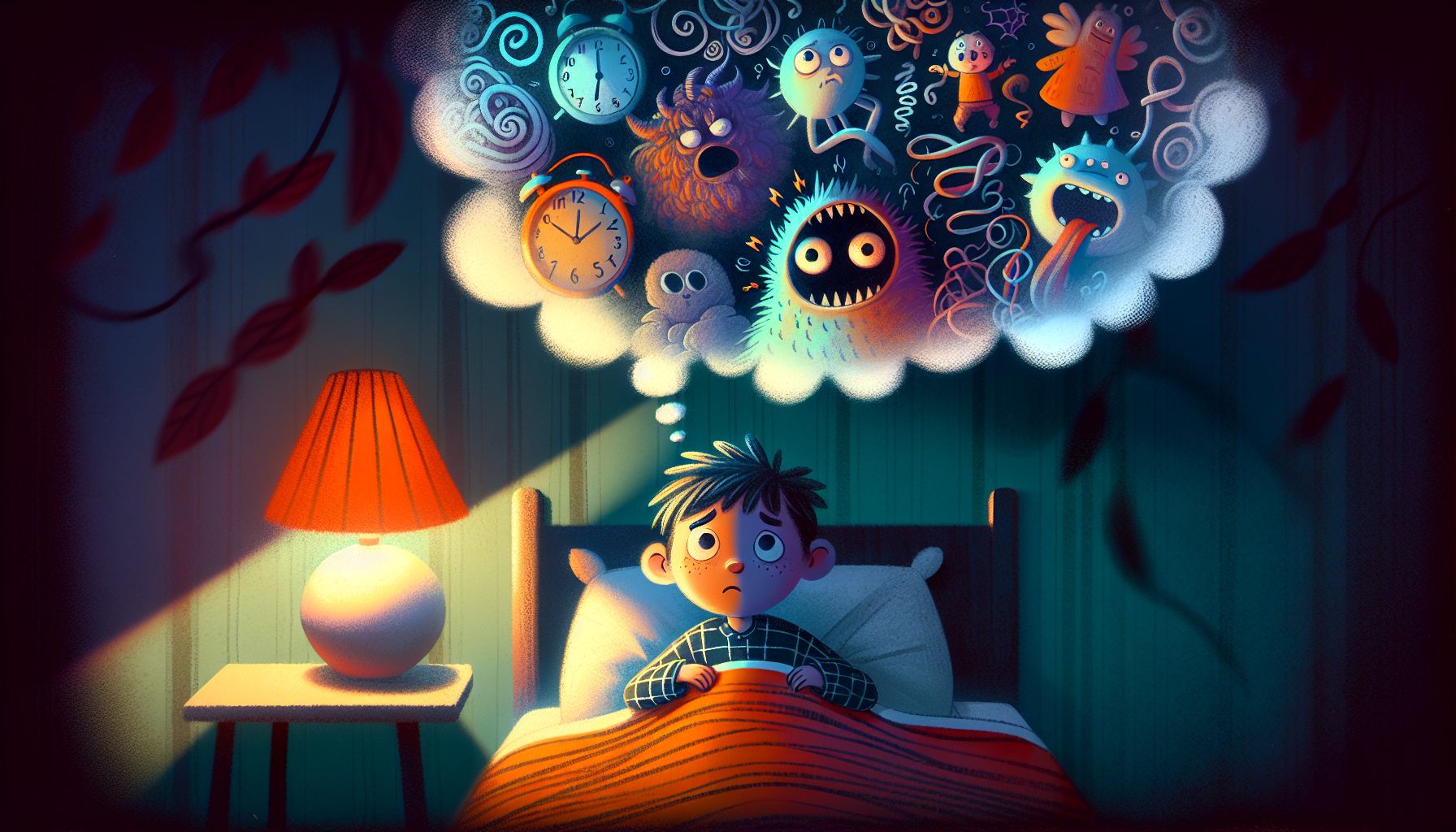-
×
 Shasha Low Shorty White Bunk Bed
1 × £229.99
Shasha Low Shorty White Bunk Bed
1 × £229.99
Subtotal: £229.99
It’s important to establish a consistent bedtime for young children as sleep is essential for their growth and development. In this in-depth guide, we’ll explore the ideal bedtime and offer tips to parents for creating a sleep routine your kids can follow.

The best bedtime for children greatly depends on their specific age, For example, children aged 3-5 years thrive with a bedtime between 7:00 PM and 8:00 PM, while 6-12-year-olds benefit from a bedtime around 8:00 PM. Adequate sleep supports growth, learning, and emotional health.
School-aged youngsters—those who fall into the bracket spanning ages six through twelve—have optimal bedtimes set at around half-past seven or eight-thirty in the evening.
As youth move towards adolescence, covering ages thirteen to eighteen, later bedtimes become more common. They’re often advised to aim for around ten o’clock at night. These recommended times take into account natural circadian rhythms pertinent to various stages of childhood, which help improve the quality of rest and overall well-being.
Adjusting bedtimes as children grow ensures they consistently get the right amount of sleep needed for their developmental milestones.
It is essential to determine the correct amount of sleep children require to establish a suitable bedtime. Young children need consistent bedtimes to meet their sleep needs. For instance, toddlers aged 1-3 years should sleep 11-14 hours daily, with bedtimes around 7:00 PM. Preschoolers benefit from 10-13 hours of sleep, with similar bedtime routines. well-designed cots can help significantly with this.
Nursery-aged kids ranging from 3 to 5 years old need about 10 to 13 hours of sleep each day, which usually includes a nap during the day. Once children hit school age (6-13 years), they should aim for around 9 to 11 hours of sleep each night. Getting enough sleep is crucial for kids’ physical and mental health, helping their brains develop properly and keeping their emotions in check.
Ensuring that children obtain sufficient sleep during the night is essential for their health and growth. Good rest enhances their ability to focus, regulate emotions, and excel in school while also bolstering their immune defences against sickness.
Adhering to proper sleep hygiene practices is fundamental for children to achieve the rejuvenating rest they require. Recognising signs of tiredness and comprehending melatonin’s function in regulating slumber are part of this process. Establishing good sleep habits assists youngsters not only in drifting off more effortlessly but also in maintaining a consistent, uninterrupted state of rest throughout the night—factors which profoundly influence their development.

To determine the most suitable bedtime for a child, calculate backwards from the time they need to wake up to make sure they receive sufficient sleep. Take a 7-year-old who requires 10 hours of sleep and has to get up at 7 AM. Their bedtime should be set for no later than 9 PM. In another instance, if a child of age 12 needs to rise at 6:30 AM, retiring to bed around 9 PM would allow them the necessary hours of rest.
Establishing such regular bedtimes is critical as it caters specifically to each child’s sleep requirements while fostering healthier sleeping patterns and overall well-being. By fine-tuning these times when needed, you can help ensure that your children obtain an adequate amount of sleep crucial for their ongoing growth and development.
Establishing a reliable bedtime routine instils a sense of security and mastery in children. Such stability diminishes the likelihood of resistance at bedtime, reducing stress for both the child and their parents. When children know what to expect next, they find it easier to wind down and gear up for sleep.
Starting this routine approximately 30 minutes before sleeping can prove beneficial. Typical activities within this window could involve gentle playtime, bathing, and teeth brushing, culminating with a calming bedtime story. The nightly repetition of these actions reinforces positive sleep behaviours while fostering tranquillity and an environment conducive to falling asleep easily. For younger children, having a fun, themed bed can help in making bedtime something they are excited about.
Incorporating quiet time activities into a bedtime routine is key to helping children transition from the hustle and bustle of the day to a state of calm. Engaging in soothing practices, like reading a bedtime story, listening to gentle music, or enjoying a warm bath, can effectively prepare children for sleep. These rituals signal that it’s time to wind down and relax.
Comfort items, such as a favourite blanket or cherished stuffed animal, can also make the transition to bedtime smoother. As these items become part of the nightly routine, they offer emotional comfort and help children feel secure and ready for a good night’s sleep.
Limiting screen usage before sleeping can significantly improve the quality of sleep. By cutting down on screen time an hour before bedtime, children are more likely to fall asleep easily. The blue light emitted by screens is known to disrupt melatonin production and interfere with the natural sleep-wake cycle.
Creating a screen-free bedroom environment and encouraging alternative quiet-time activities can help establish better sleep habits. Such measures foster an atmosphere conducive to rest, free from the stimulating effects of screens.
Creating an optimal environment for child sleep is crucial to ensure children receive the necessary rest. To facilitate this, a child’s bedroom should not contain screens or distracting objects such as toys that may disrupt their sleep. The space should be perceived by the child as safe and comforting, setting the stage for them to easily transition into sleep. A high sleeper bed with a space to read before bedtime could be a great option to make the bedtime transition easier.
Maintaining a tidy and orderly sleeping area is instrumental in promoting quality sleep. An inviting and peaceful bedroom atmosphere can help foster associations between that space and tranquillity in children, thereby aiding their ability to fall asleep with ease.

The ambient temperature and illumination in a child’s bedroom are significant factors influencing their capacity to fall asleep and remain asleep. Maintaining the room at a cool 16-20°C is beneficial for avoiding overheating and fostering an environment conducive to restful sleep, thereby optimising slumber.
Incorporating soothing fragrances such as lavender into bedtime routines can bolster relaxation. These aromas serve as cues for the body that bedtime has arrived, aiding in the transition towards sleep preparation.
Ensuring that children are comfortable and secure is essential when crafting a sleep environment for them. Opting for breathable bedding, like cotton, can help maintain the child’s body temperature throughout their sleep. It’s vital to have a supportive mattress to promote restful sleep during the night.
Incorporating a night light or baby monitor into your child’s bedroom can foster feelings of safety and comfort. Bunk beds from Thuka come with a free Bunky Light to aid with a good sleep. These aids not only offer a sense of security but also make it easier for kids to fall asleep on their own, helping them learn to soothe themselves. When children wake up in the middle of the night, these comforting items can provide a reassuring presence that helps them settle back to sleep.
Around 25% of young children suffer from sleep disturbances that negatively impact their daily activities, causing daytime fatigue and various other concerns. To address these challenges and foster good sleeping patterns, a consistent bedtime routine is crucial.

For those kids who struggle with sleep issues, such as individuals on the autism spectrum, adhering to steady bedtime routines combined with soothing pre-sleep activities is especially helpful. These strategies aid in helping children make positive associations between relaxation and the time for bed.
Establishing a calm and peaceful bedtime routine can be a game-changer for kids who have trouble falling asleep. This routine helps them wind down and get ready for bed. Studies show that kids who stay up late regularly might end up feeling more tired and face more sleep-related issues.
Setting an earlier bedtime can really help fix sleep problems in children. A consistent and relaxing pre-bedtime routine can make it easier for them to not only fall asleep but also do so more smoothly.
Both parents and children can find night terrors quite unsettling. These episodes of agitation happen during the deep sleep phase, and typically, a child does not remember them upon awakening. Being excessively fatigued is often a contributing factor to night terrors.
Should night terrors persist, parents should consult with either a paediatrician or specialists in child sleep. Establishing a soothing routine at bedtime and ensuring that the child gets enough rest may aid in decreasing nightmares and night terrors.
Consuming the proper nutrients and maintaining consistent exercise are crucial factors that contribute to healthy sleep routines for children. Foods that encourage relaxation can enhance the quality of sleep while engaging in regular exercise enables children to burn off energy, which assists in establishing improved sleeping patterns.
As pointed out by the National Sleep Foundation, fostering a balance between good nutrition and routine physical activity is essential for nurturing beneficial sleep habits in kids. Providing children with appropriate nourishment along with encouraging daily exercise aids their general health and growth, reinforcing positive patterns of restful slumber.

Adding sleep-friendly foods to your child’s diet can really make a difference. Take warm milk, for example—it’s known for its calming effects and can help your little one drift off to sleep more easily.
Timing meals is also important. Eating a big dinner too close to bedtime can make it harder to fall asleep. And let’s not forget about caffeine—keeping it out of your child’s diet after midday can work wonders for their sleep. A well-thought-out eating routine focused on promoting rest can significantly improve the quality of your child’s sleep.
Regular exercise is a fantastic way for kids to burn off energy, which helps them sleep better. Getting them to be active earlier in the day can boost the quality of their sleep. Just be careful with vigorous activities close to bedtime, as they can actually make it harder to settle down.
Physical activity naturally tires kids out, making it easier for them to fall asleep. Incorporating daily exercise into their routine is key to helping them get the rest they need.
When kids don’t get enough sleep, it can really take a toll on them. You might notice they become more emotional and have more behavioural issues. Lack of sleep can also hinder their brain development and make learning more difficult.
Not getting enough rest can mess with their physical growth and make it harder for them to maintain a healthy weight. Plus, it weakens their immune system, making them more prone to getting sick. So, making sure they get enough sleep is crucial for their overall health and well-being.
To wrap things up, making sure your kids get the right amount of sleep is super important for their health and development. By knowing the recommended bedtimes and sleep hours for different ages, setting up a consistent bedtime routine, creating a cosy sleep environment, tackling common sleep issues, and encouraging good nutrition and exercise, you can help your kids sleep better.
Remember, good sleep habits and routines are key to helping your children get the rest they need. Let’s make sleep a priority and give our kids the best start for a healthy, happy life.
A 7-year-old typically needs about 9 to 11 hours of sleep each night. To ensure they get the right amount of rest, it’s best for them to go to bed between 7:30 and 8:30 PM. Establishing a consistent bedtime routine can help them wind down and prepare for sleep, making it easier for them to fall asleep and stay asleep throughout the night.
To guarantee that your 5-year-old gets the recommended 10-13 hours of sleep, it’s best for them to go to bed between 7 and 8 PM.
Establishing this routine is crucial for their general growth and health.
A 10-year-old typically needs about 9 to 11 hours of sleep each night to support their growth and development. Ensuring they get adequate rest can significantly benefit their overall health and well-being.
Incorporating calming activities like reading a bedtime story, listening to gentle music, or enjoying a warm bath can significantly enhance your child’s sleep readiness.
These practices create a soothing environment conducive to restful sleep.
Ensure that your child’s sleep space is free from screens and set the room temperature to a cosy range of 16-20°C. To Enhance the environment, you might want to use soothing fragrances such as lavender and provide bedding made from materials that allow for good airflow.
Taking these measures will help improve the quality of sleep for your child.
Should your child consistently suffer from night terrors, seeking advice from a paediatrician or sleep specialist is crucial.
It could be beneficial to make sure that your child gets sufficient rest as this might help in decreasing the occurrence of these episodes.